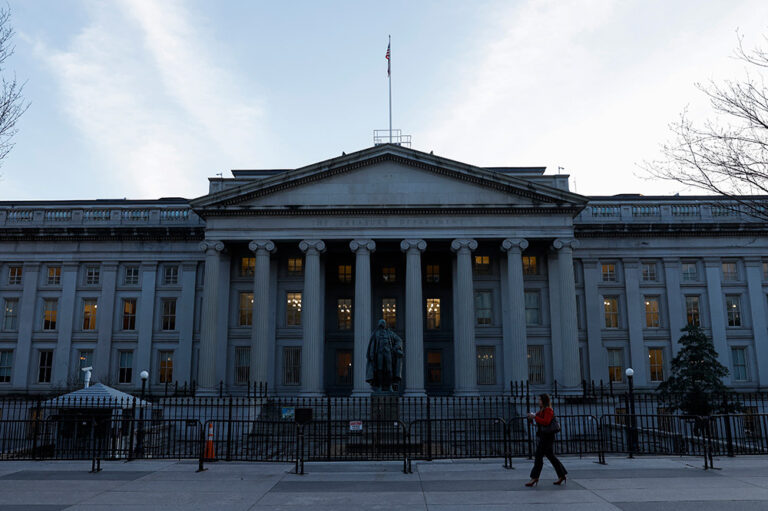Policy leaders and experts across the political spectrum have put forward a number of comprehensive plans that can reduce America’s long-term debt and lay a strong foundation for future economic growth. By examining these plans, policymakers and the public can gain a better understanding both of what’s required, as well as what we have to gain, by putting our fiscal house in order.
Comprehensive plans generally phase in changes slowly in order to give people time to plan and to protect near-term economic growth. While some plans may rely more on spending reductions and others might depend more on tax increases, a key feature of most of these plans is that they include a combination of both.
Policy Options
Simpson-Bowles
The Simpson-Bowles plan was the product of the National Commission on Fiscal Responsibility and Reform, co-chaired by a bipartisan team of two distinguished public servants: former Senator Alan Simpson (R-WY) and Erskine Bowles, former chief of staff to President Bill Clinton.
Simpson-Bowles catalyzed the discussion about America’s long-term debt and deficits by raising awareness of the stark projections of future debt and by putting forward a series of proposals designed to set the nation on a sustainable fiscal path. The National Commission was created in 2010 by President Obama, with input from Congress, and included members of Congress from both parties as well as business and labor leaders. Although 11 of the Commission’s 18 members endorsed the co-chairs’ recommendations, the proposal fell short of the 14 votes required for it to be presented for a vote by the Congress. However, it does offer insight into the give-and-take decisions that will have to be made as policymakers grapple with long-term debt.
Some key highlights from the plan include:
- Raising revenue to 21 percent of GDP (above the long-term average of 17 percent) and reducing spending to 21 percent of GDP (below long-term spending projections)
- Reducing the debt to 60 percent of GDP by 2023 and to 40 percent by 2035 (very close to its 50-year historical average)
- Reducing tax rates, eliminating most tax deductions and credits, and simplifying the tax code while raising revenue to reduce deficits
- Curb the growth of defense and nondefense discretionary spending by implementing enforceable caps and eliminating several procurement projects, reforming military healthcare, ending low priority programs, and streamlining government operations
- Stabilizing Social Security’s finances while strengthening the safety net for seniors with low incomes
Simpson and Bowles updated their proposal in 2013 to account for new budget projections and policy developments, but the principles at the core of the plan remained unchanged — shared sacrifice, changes to both taxes and spending, tackling the big challenge of entitlement spending, and putting debt on a downward path relative to the size of the economy.
Domenici-Rivlin Task Force
In 2010, the Bipartisan Policy Center established the Debt Reduction Task Force, chaired by former Senate Budget Committee Chairman Pete Domenici (R-NM) and Alice Rivlin, a former Clinton Administration budget director and the founding director of the Congressional Budget Office. The 19 members of the Domenici-Rivlin Task Force included former officeholders at the federal, state, and local levels; budget experts; and representatives for labor, seniors, and small businesses.
This diverse group, representing interests across the political spectrum, concluded that “without action, growing deficits and debt will create serious problems for our economy, our prosperity, and our leadership in the world.”
Specifically, the Task Force put forth a comprehensive plan of tax and spending reforms that would:
- Stabilize federal debt below 60 percent of GDP
- Raise revenues to 21 percent of GDP by eliminating many deductions, exclusions, preferences, and credits
- Reduce spending to 23 percent of GDP
- Freeze domestic discretionary and defense spending
- Moderate spending growth on healthcare
- Put Social Security on a sustainable footing, increasing benefits for the lowest lifetime wage earners and paring them for the top 25 percent of earners
The Domenici-Rivlin plan was updated in 2012, combining new measures to deal with the fiscal cliff with the fundamental principles that underpinned the original framework. The updated plan noted that “the challenge can be met if lawmakers demonstrate leadership and put everything on the table. The changes we suggest are not easy, but they improve the quality and efficiency of government and strengthen the economy for all Americans.”
Solutions Initiative
The Peter G. Peterson Foundation’s Solutions Initiative brings together leading policy organizations from across the political spectrum to develop plans to achieve long-term fiscal sustainability. The 2024 Solutions Initiative showcased seven comprehensive plans to put America on a stronger, more sustainable fiscal path. While each individual plan reflected the policy priorities of the authors, every participating organization has chosen to significantly reduce the federal debt — a bipartisan recognition that our current debt trajectory is unsustainable.
The 2024 Solutions Initiative was the fifth iteration of the exercise; comprehensive plans were also developed by participating organizations in 2011, 2012, 2015, and 2019. In each iteration, the Initiative has demonstrated that there are many ways we can build a better future for America. The wide-ranging policy options and recommendations presented can inform the national conversation, helping Americans and their leaders assess and prioritize solutions to our fiscal challenges. Proactively addressing our fiscal future will lead to a better course for America with less debt, stronger economic growth, broader prosperity, and enhanced economic opportunity.
Image credit: Getty Images
Further Reading
The Fed Reduced the Short-Term Rate Again, but Interest Costs Remain High
High interest rates on U.S. Treasury securities increase the federal government’s borrowing costs.
What Types of Securities Does the Treasury Issue?
Learn about the different types of Treasury securities issued to the public as well as trends in interest rates and maturity terms.
Quarterly Treasury Refunding Statement: Borrowing Up Year Over Year
Key highlights from the most recent Quarterly Refunding include an increase in anticipated borrowing of $158 billion compared to the same period in the previous year.


